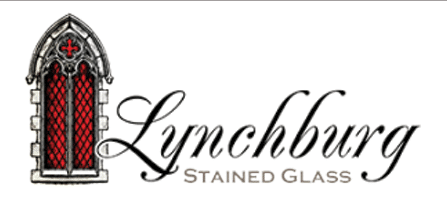This article originally appeared in the January 2005 issue.
By Ken Collins
The Rev. Kenneth W. Collins is the pastor of Garfield Memorial Christian Church in McLean, Va. You can visit him on the Internet at www.kencollins.com.
Vestment is the term for special clothing worn by the people who conduct a worship service. Vestments have their origin in the ordinary street clothes of the first century but have more or less remained the same as clothing fashions have changed. Today, vestments are designed to be worn over street clothes and serve a number of practical purposes: they conceal the distractions of fashionable street clothing; they remove any consideration of what constitutes appropriate attire; and they remind the congregation that the ministers are not acting on their own, but performing in their official capacities. Vestments are in almost universal use, although, in some churches, only the choir wears vestments. Common vestments include albs, cassocks, chasubles, robes and surplices.
Clericals is the term to describe the distinctive street clothing that clergy wear, such as black shirts with white collars. The shirt can be any color, but the public often does not perceive it as a clergy shirt unless it is black. There are two kinds: neckband shirts and tab-collar shirts.
Many people use the term robe as a synonym for vestment, but in actual fact, a robe is not a vestment at all. It is an ankle-length gown with long sleeves, designed to be worn without a cincture. There are four types of robes, all of which are modern forms of the academic robes that professors used to wear while on the job in medieval universities. The four types are choir robes, clergy robes, academic gowns, and judicial robes. Only the first three types are worn in church. All types of robes are designed to be worn over street clothing. The only vestment that can be worn over a robe is a stole.
Clergy robes mark clergy who do not have a doctorate degree or who do not choose to wear their doctoral robes. Even though most clergy have a masters degree, clergy robes are a modified form of the baccalaureate robe, probably because contemporary masters robes have an odd appearance. Clergy robes are nearly identical to judicial robes, except that clergy robes often have a sort of built-in stole, a wide stripe running down both sides of the zipper in the front, often with decorated with Christian symbols.
Academic gowns come in three forms corresponding to bachelors, masters and doctoral degrees. The doctoral robe sometimes appears in church. It has puffy sleeves with three stripes on the forearm, indicating that the wearer possesses a doctoral degree. When they are used in church, academic gowns are most often worn without the square cap or the long, decorative hood down the back that normally complete the outfit. If there is a hood, the colors indicate the wearer’s field of study and alma mater.
Unlike vestments, robes are not worn by lay leaders. The original purpose of the robe was to indicate that the wearer had the authority of academic credentials. John Calvin started the tradition of wearing academic robes in church. He was not able to wear vestments because he was not ordained clergy, but he did have an academic law degree. For that reason, clergy robes are most common in churches that are in the Reformed tradition, such as Presbyterian churches, and in other groups with Calvinist roots, such as Baptists.
The following are my personal suggestions for Protestant ministers whose denominations don’t give them guidance on what to wear. I am following the general ecumenical practice in the United States.
Presbyterians can use these suggestions; however, if they wish to wear the distinctive Presbyterian vestments that are based on medieval academic attire, they should consult their presbyteries. Roman Catholic clergy and especially Orthodox clergy should consult their bishops.
Lay Leaders
In any church, there are people who can’t afford nice clothes, people who overdress and others who just have poor taste. You can eliminate these problems if you vest the lay leaders. It won’t matter how they are dressed, because no one can see what is underneath.
If you would like lay leaders to be vested, acquire a collection of albs in various sizes. Lay people can wear albs and cinctures. Albs are available in children’s sizes for acolytes who are children. If you are Anglican, you have the alternative of cassocks and surplices. In that case, acolytes can wear red cassocks with white surplices.
Only choir members should wear choir robes. It is possible to outfit the choir in cassocks and surplices, just like the choirs of angels on Christmas cards. There are specially designed vestments for organists and pianists. They match the vestments for the choir, except that the sleeves fall away at the elbows so that they don’t interfere with the keyboard.
It is inappropriate for a lay leader who is not a choir member to wear a choir robe or a Geneva gown. Only ordained clergy should wear a pulpit gown, and only ordained clergy with a doctorate degree should wear the pulpit gown with puffy sleeves that have three stripes.
Regular Ordained Clergy (Presbyters)
If you are ordained clergy, and you would like to dress ecumenically for worship, I suggest the following wardrobe:
* One or two albs
At least one should be white to avoid a color clash with your white stole. The second alb can be white, ivory or natural-colored. If you have two albs, you won’t feel any anxiety when you take one to the cleaners. Albs are inexpensive compared to other vestments, and most are machine washable.
*Four stoles
You need one stole in each of the following colors: green, white, red and purple. The type of stole that goes with an alb is sometimes called a broadstole. It is about five inches wide. You wear it around your neck with the ends hanging down in front to about your knees.
*A natural-colored rope cincture, or cinctures in colors that match the stoles
Some albs are designed to be worn without cinctures, and others come with cloth cinctures, but in most cases, you’ll need the ropes.
* If you wish to give special Communion services extra dignity, four chasubles in each of the four colors I just mentioned
You need a second set of specially designed stoles to wear under the chasubles, but don’t worry–when you purchase a chasuble, it normally comes with the matching stole. There are cheap chasubles; however, they look as cheap as they cost. Since you will be wearing them the rest of your life, invest in a good ones. Chasubles are very expensive, so you can economize by having only one chasuble; in which case, make sure it is ivory or white and very high quality, so that you use it for weddings, funerals, Christmas and Easter—services that include Communion.
To get dressed, put on the alb and the cincture. Put the cincture on the level of your navel, not your waist; otherwise, it will accentuate your belly and make you look like you have a bigger paunch than you do. Then put the stole over the alb. If you are wearing a chasuble, it goes on top.
Think of the stole as the first-century equivalent of the modern necktie, and the chasuble as the first-century equivalent of a modern jacket. Think of the alb as the first-century equivalent of a dress shirt that is very long and not tucked in. There wasn’t anything to tuck the alb into, because in the first century, only barbarians wore pants.
You can also acquire a small “portable stole” that is purple on one side and white on the other. You wear it over your street clothes on certain occasions. The purple side is for hearing confessions or conducting counseling sessions (whichever your church calls it) and for ministering to people during sick visits. The white side is for funerals when full vestments aren’t practical and for ministering to people in the presence of the deceased.
Ordained Deacons
If you are an ordained deacon in the Episcopal Church or in any of the Methodist denominations, or if you are a “licensed minister” in the Disciples of Christ, I suggest the following wardrobe:
*One or two albs
At least one should be white to avoid a color clash with the white stole. The second alb can be white, ivory or natural-colored. If you have two albs, you won’t feel any anxiety when you take one to the cleaners.
* Four deacon’s stoles
You need one stole in each of the following colors: green, white, red and purple. A deacon’s stole is designed to hang only over the left shoulder to your knees; or more commonly, it hangs diagonally across your chest, is gathered at the waist on the right, and extends down your right leg to about your knees. Your church discipline probably prohibits you from wearing a presbyter’s stole.
* A natural-colored rope cincture, or a cincture in colors that match the stoles.
Some albs are designed to be worn without cinctures, and others come with cloth cinctures, but in most cases, you’ll need the ropes.
*If you like, a dalmatic
To get dressed, put on the alb and cincture. Put the cincture on the level of your navel, not your waist; otherwise, it will accentuate your belly and make you look like you have a bigger paunch than you do. If you are wearing a dalmatic, put it on next. Finally, put the deacon’s stole on top.
When to Wear Which Stole
*Red
Wear your red stole at Holy Week services, on Pentecost, at ordinations and on services that commemorate the death of a Christian martyr.
*White
Wear your white stole during the 12 days of Christmas, during the 50 days of Easter, at funerals and at weddings. Wear it at any service that celebrates a secular holiday and on certain special days, such as Epiphany Day, the Baptism of our Lord (which is the Sunday after the Epiphany), Trinity Sunday and All Saints Sunday. You can wear a small, white “portable stole” over your regular clothes when ministering to people in the presence of the deceased, or when conducting a funeral when full vestments are not practical for some reason.
*Purple
Wear your purple stole during Lent and Advent. You can wear a small, purple “portable stole” over your regular clothes when hearing confessions (in Lutheran and Anglican churches), when conducting a counseling session (which is the same thing for the rest of us) and when administering Communion in the hospital.
*Green
Wear your green stole whenever none of the above colors applies, mainly after Epiphany Day but before Ash Wednesday, and after Pentecost Sunday but before the first Sunday of Advent.
Use these color guidelines for chasubles, too.













